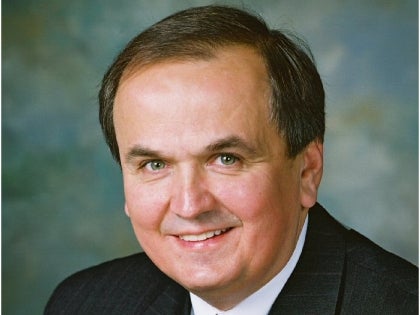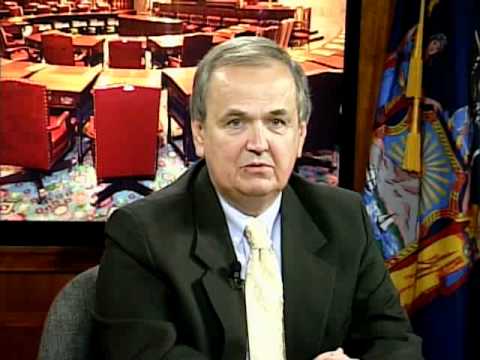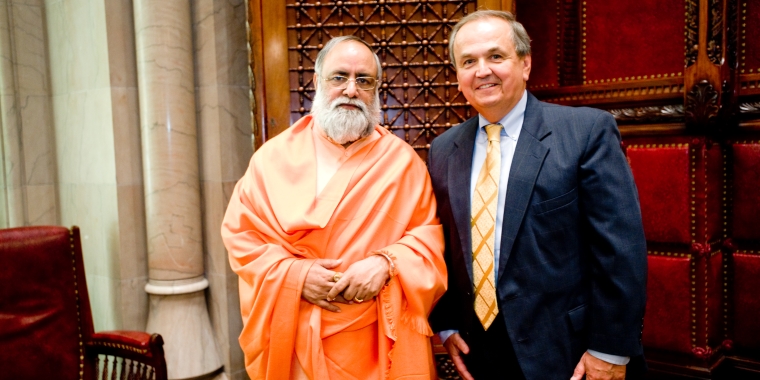
Senator Maziarz Supports Historic SUNY Reforms
Gov. David A. Paterson announced today (Jan. 15, 2010) that he will include in his 2010 Executive Budget significant reforms that would give SUNY—and UB—the financial flexibility to position the system and university to play a major role in the state’s economic resurgence and support UB 2020 as a basis for economic transformation in Western New York.
The proposed reforms, Paterson said, are the most significant to New York State’s system of public higher education in a generation and will help SUNY achieve a model of excellence that will better prepare students for new economy jobs that will drive New York’s future prosperity.
The reforms are based on groundwork laid by UB and by SUNY’s Board of Trustees. They include changes to tuition, budget, management and operational policies, similar to those in the UB 2020 Flexibility and Economic Growth Act proposed last year by Western New York’s legislative delegation and passed by the Senate.
The reforms are intended to free SUNY from an “over-burdensome system of overregulation threatening the ability of our public higher education system to successfully adapt to changing educational and fiscal circumstances,” Paterson said.
President John B. Simpson said the reforms proposed by Paterson with SUNY Chancellor Nancy L. Zimpher “are exactly what SUNY’s research universities need to compete with the nation’s best public universities and thereby will help fuel the economic future of New York State.”
“These are common-sense reforms that will create no additional costs for taxpayers, while providing flexibility to the State University of New York,” he said.
As a result of the reforms, Simpson said SUNY will be in a “much better position to strengthen its academic programs, provide additional opportunities for its students, generate more jobs and produce additional discoveries that will help our state move toward a new, robust economy—one based on innovation and knowledge.”
The governor’s reforms, Simpson continued, “will help UB rise among the nation’s top public research universities and fulfill the promise of UB 2020—our plan to achieve UB’s full potential, grow the university in both quality and size, and significantly increase our economic impact on Western New York.”
Full implementation of the UB 2020 strategic plan will increase UB’s annual economic impact on Western New York and New York State from $1.7 billion to $3.6 billion and create thousands of new jobs.
Sen. George Maziarz noted that no other economic development project in Western New York enjoys widespread support like UB 2020. “I want to help make it happen and create thousands of good jobs. These reforms will generate much of the necessary resources, and we won’t be taking it out of the pockets of taxpayers,” he said.
Simpson said he was pleased the governor’s reforms contain provisions for extending the Tuition Assistance Program and keeping tuition increases modest and predictable. “These provisions will help ensure that New York State students and families will continue to have access to an affordable, high-quality education,” he said.
Paterson’s proposal—called the Public Higher Education Empowerment and Innovation Act—drew praise from leaders across Western New York.
“We've seen the state's willingness to utilize SUNY as an economic driver in New York with Senate passage of the UB 2020 legislation adopted during our 2009 session,” noted Sen. William T. Stachowski, the sponsor of the UB bill. “And while this measure was a good first step in recognizing the vital role that the state university system can play in creating jobs and keeping our children in New York as productive members of our community, the governor’s proposal will certainly help us in the legislature in promoting programs that are budget neutral and high impact. Although we may view this as a second step in the process, I'd like to think that our UB 2020 bill is the model we will use going forward in promoting the SUNY system and New York State as a whole,” Stachowski said.
“Passage of these reforms is very important to the City of Buffalo because it will enable UB to reach the full potential of UB 2020,” said Buffalo Mayor Byron Brown. “This, in turn, will lead to substantial new job and business growth in Buffalo—especially within the city’s emerging downtown medical campus.
“I am hopeful our leaders in Albany will recognize the critical importance of these reforms for Buffalo’s and UB’s future, and will support passage of the reforms into law.”
Assemblyman Robin Schimminger called UB 2020 “a bold initiative to move the university forward into the new century. UB 2020 has now become the linchpin of the governor’s new initiative that will enable UB and other SUNY schools to implement changes and reforms that will better serve students and at the same time maximize the university’s ability to contribute to the economic vitality of Western New York,” Schimminger said.
Assemblymember Crystal Peoples said she is appreciative of the governor’s inclusion of last year’s UB 2020 legislation into the Public Higher Education Empowerment and Innovation Act. “Given the financial condition of the state, these public policy reforms make sense for UB, the State University of New York and, most importantly, for the communities in which they reside and impact,” she said.
The governor’s proposal:
• Authorizes the boards of trustees for SUNY and CUNY to implement a responsible and rational incremental tuition policy that will provide the universities with the discretion to raise tuition up to an annual cap of two-and-one-half times the five-year rolling average of the Higher Education Price Index (HEPI), making it easier for students and families to anticipate and plan for the true cost of attendance over the course of a degree program.
• Authorizes the SUNY and CUNY trustees to implement differential tuition rates for programs and campuses within their systems, based on the recommendation of the college president and in accordance with specific guidelines promulgated by the trustees.
• Moves tuition outside the state budget process, allowing SUNY and CUNY to receive and disburse revenues from tuition and self-supporting program activities without an appropriation.
• Authorizes the lease of real property under the jurisdiction of SUNY to other entities in support of its educational purpose, and the participation in public/private partnerships that will benefit SUNY’s mission, subject to approval of a newly created State University Asset Maximization Review Board.
• Removes provisions of law subjecting SUNY and CUNY to pre-approval of contracts by the Office of the State Comptroller (OSC) in order to streamline the procurement of goods and services, while maintaining provisions requiring the post-audit of such contracts by OSC.
• Allows post-audit in lieu of pre-audit requirements for attorney general approval of leases between SUNY and its alumni associations in support of dormitory projects.
• Prescribes specific semi-annual reporting requirements on revenues and expenditures at a campus-specific level to ensure continued transparency and accountability.
Assemblyman Sam Hoyt applauded the governor for this proposal, which he said “will increase investment in our public university system at no cost to taxpayers, create jobs and develop knowledge in areas that will allow New York State to be more competitive than ever in the global economy.”
"This proposal is a tremendous step forward for SUNY and it will have major impact on the efforts to move New York State's economy into the future," said Assemblyman Mark Schroeder. "These much needed changes will help the SUNY schools better serve their students and strengthen the communities where they are located. The plan will also provide something else that is desperately needed in this state—thousands of quality jobs in a wide range of fields."
Andrew J. Rudnick, president and CEO of the Buffalo Niagara Partnership, said that for the past three years, UB 2020 has been identified as Buffalo Niagara’s No. 1 economic-development priority. “We now are pleased to see that what’s good for this region is being recognized as good for the rest of the state. Making the reform measures sought by UB 2020 available to a larger number of SUNY schools—even the entire SUNY system—will enable the communities statewide to reap the same economic benefits envisioned for Buffalo Niagara,” he said.
“We are pleased that Gov. Paterson also recognizes this enormous promise by his inclusion of SUNY reform language in the Executive Budget, and we look forward to working with the state Legislature on seeing these reforms come to fruition.”
The Rev. Richard Stenhouse, president of the Jeremiah Partnership, an influential coalition of Buffalo pastors, said the partnership has “joined with our entire community over the past two years to promote UB 2020 as this region's best hope for an economic revival. We are excited to learn that Gov. Paterson has announced that he supports the SUNY reforms that will allow the University at Buffalo to implement its bold plan for the future.”
Paul Brown, president of the Buffalo Building Trades Council, said he strongly supports Paterson’s reforms. “This legislation—born from last year’s UB 2020 legislation—will lead to the creation of tens of thousands of construction jobs throughout New York State and move our economy forward. I applaud the governor for his leadership and look forward to working with him, the University at Buffalo and the State University of New York,” Brown said.
“The thousands of jobs these reforms will lead to in Western New York are critical given Buffalo's high poverty and unemployment numbers. The governor has demonstrated with today's announcement that he is serious about fixing the upstate economy and we look forward to working with him to see that that happens.”
Assemblyman Jack Quinn, the ranking minority member of the Assembly Higher Education Committee, said he will “do all I can to see that this landmark legislation is signed into law.”
“I am thrilled to see Gov. Paterson has included these reforms in his 2010 budget proposal,” Quinn added. “This bold and intelligent initiative will allow UB to fully implement its long-term strategic plan, UB 2020. And by allowing the state’s public research universities to rationally control their tuition and operations—freeing them from the political impulses of the annual budget—UB can finally reach its full economic, social and cultural potential. This legislation will directly create thousands of jobs, revitalize distressed neighborhoods, allow modern industries to emerge and invigorate Western New York’s economy.”
Sen. Dale M. Volker said the governor’s proposal is “a great development for the future and may be seen as a key moment in the economic history of Western New York. It has been desperately needed for a long time."
Assemblyman James Hayes called it vital for the future of Western New York “that UB be one of the cornerstones of economic and job growth, which are important goals of UB 2020. We must continue to move ahead with these plans.”
Erie County Executive Chris Collins said it was “welcome news to hear that Gov. Paterson plans to give UB the necessary freedom to transform itself into a world-class research institution, allowing the university to achieve its UB 2020 vision. The growth and development of UB will have a dramatic impact on our community and represents one of our best opportunities to rebuild the local economy.”
Assemblywoman Jane Corwin pointed out that “the innovation proposal for SUNY is a cost-neutral and all-encompassing reform package that will provide our higher education institutions with the proper tools and flexibility to achieve their respective goals.”
Colleen DiPirro, president and CEO of the Amherst Chamber of Commerce, said that Paterson’s proposal “signals a new day in Albany and a bright economic future for Western New York.”
“Our entire community has rallied around our own hometown university and its plan—UB2020, which will jumpstart a new innovation economy. We’re grateful that the governor has chosen to stand with us,” she said.

